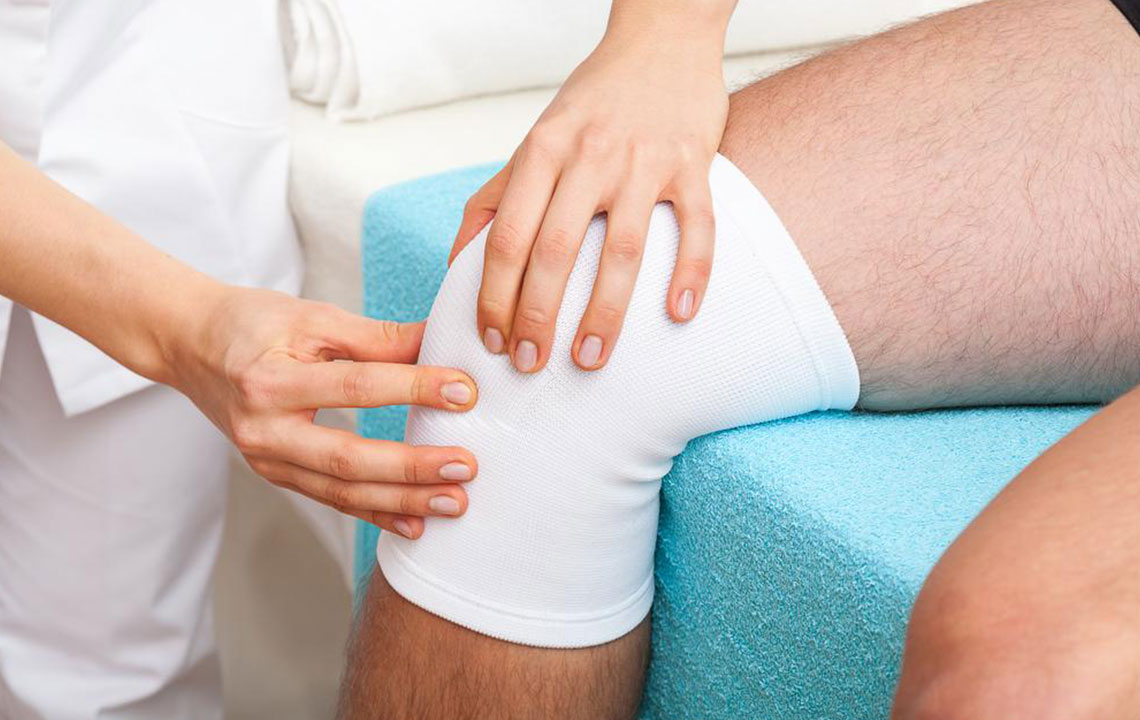Method and Materials that can Alleviate Knee Pain

Knee pain is something we all must have experienced or do experience every now and then. Knee pain surprisingly develops from everyday wear and tear, which could be sports activities, running errands, previous injury, or simply getting old.
If everyone didn’t know, the knee is the largest joint in our body. Doctors and experts say that knee pain is generally caused due to some previous injuries or sudden twists in knee movements. Prolonged pressure on the knee can also cause severe to moderate knee pain.
Knee pain can have various symptoms like redness around the area, swelling, stiffness, weakness or instability, and crunching noises; one of the major symptoms is the inability to fully straighten the knee. Moreover, one must not ignore any discomfort in that area and must quickly get relief.
Here are some remedies that can be done at home or under the supervision of an expert. These remedies can help you get rid of knee pain or at least give you some leverl of knee pain relief that you might just be hoping for.
Ginger tea and turmeric
Both these ingredients are anti inflammatory and help a lot in curing arthritis issues. Moreover, turmeric is full of anti-oxidants, which helps in knee pain relief and cure. You can easily make some tea infused with ginger and add a little bit of turmeric and have it so that you can be eventually free from any bodily pains.
Epsom salt soak
Epsom salt soak has been widely used for treating body pain, and it is especially used for knee pain relief. Epsom salt is rich in magnesium sulfate and many doctors recommend using this. All you have to do is mix some Epsom salt in a bowl and soak the area to relieve yourself from any pain. For knee pain relief, have a long bath with Epsom salt mixed in water.
Increase the intake of magnesium
Magnesium is highly important for our body; it helps in relaxing all the muscles and joints and helps in decreasing pains. Magnesium helps make the bones stronger, which in turn help when dealing with injuries. It’s important to take a magnesium-rich diet; increase your intake of spinach, broccoli, and beans. Furthermore, adding Magnesium supplements to your daily routine is a great thing to do. Do consult a doctor before you start taking any kind of supplements.
Regular exercise
Our body needs a daily dose of physical activity or exercise. Exercising helps in keeping the body fit and making sure all the joints and muscles are working well. Consult a physiotherapist on what exercises are suitable for the kind of pain you are experiencing.
Weight loss
Most of those who suffer from excess weight or obesity tend to have these issues of knee pain. Weight does affect the knee a lot and often causes knee injuries owing to excess strain or pressure on the knees. A healthy diet is highly important, and working toward weight loss is extremely important for knee pain relief.
Peppermint and eucalyptus oil blend
Both these oils work fantastically for knee pain relief and other bodily pain relief. These oils contain analgesic and pain-relieving properties. Peppermint and Eucalyptus oils have a great soothing and cooling effect which eventually makes the pain reduce and go away. Just mix 5-10 drops of both the oils and massage the knee or any other area where you are experiencing discomfort.
RICE method for treating knee pain
RICE is an acronym that stands for Rest, Ice, Compression, and Elevation. All of you have to do is give some rest to that area and use an ice pack on the knee, even frozen vegetables can do the same job. Apply a bandage to that area so that there is no swelling and try to keep the knee in an elevated position. It is a quick fix method if you suddenly experience knee pain.
Cold and heat therapy
This again works fantastically for knee pain relief, especially if you might just have sprained the area. Using a heating pad can greatly help in avoiding a stiff knee, and a cold gel like wrapping around the knee will help reduce inflammation and swelling. It will calm the injury as well. Keep alternating between cold and hot for the initial 24 hours, use cold therapy more often. This method will also help reduce any injuries you might experience later on.
Consuming gooseberry
Gooseberry is very rich in a lot of ingredients that help in making the bones stronger and better. Having gooseberry juice will have great benefits if you have soft and tender bones.


